Related Research Articles
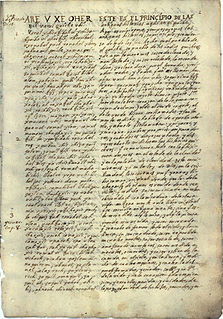
Popol Vuh is a text recounting the mythology and history of the Kʼicheʼ people, one of the Maya peoples, who inhabit Guatemala and the Mexican states of Chiapas, Campeche, Yucatan and Quintana Roo, as well as areas of Belize and Honduras.
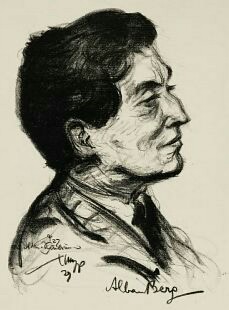
Alban Berg's Violin Concerto was written in 1935. It is probably Berg's best-known and most frequently performed instrumental piece, in which the composer sought to reconcile diatonicism and dodecaphony. Berg composed it on a commission from Louis Krasner, and it became the last work that he completed. Krasner performed the solo part in the premiere at the Palau de la Música Catalana, Barcelona, on 19 April 1936, after the composer's death.
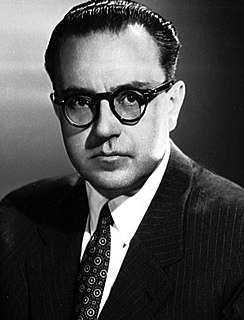
Alberto Evaristo Ginastera was an Argentinian composer of classical music. He is considered one of the most important 20th-century classical composers of the Americas.
The Piano Concerto, Op. 38, by Samuel Barber was commissioned by the music publishing company G. Schirmer Inc. in honor of the centenary of their founding. The premiere was on September 24, 1962, in the opening festivities of Philharmonic Hall, now David Geffen Hall, the first hall built at Lincoln Center for the Performing Arts in Manhattan, with John Browning as soloist with the Boston Symphony Orchestra conducted by Erich Leinsdorf.

Feu d'artifice, Op. 4 is a composition by Igor Stravinsky, written in 1908 and described by the composer as a "short orchestral fantasy". It usually takes less than four minutes to perform.
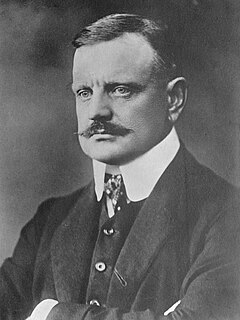
The Lemminkäinen Suite, Op. 22, is a four-movement symphonic poem for orchestra completed in 1895 by the Finnish composer Jean Sibelius. The piece was originally conceived as Veneen luominen, an opera with a mythological setting, before the work took form as a suite. Its story is based on the heroic character Lemminkäinen from the Kalevala, a collection of Finnish folklore and mythology epic poetry. The second movement, The Swan of Tuonela, is the most popular of the four movements and is often performed on its own.
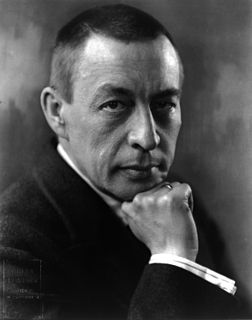
The Symphonic Dances, Op. 45, is an orchestral suite in three movements. Completed in 1940, it is Sergei Rachmaninoff's last major composition.
The Piano Concerto No. 2 in G major, Sz. 95, BB 101 of Béla Bartók is a musical composition for piano and orchestra. The work which was composed between 1930 and 1931, is notorious for being one of the most difficult pieces in the repertoire.
The Symphonies of Wind Instruments is a concert work written by Igor Stravinsky in 1920, for an ensemble of woodwind and brass instruments. The piece is in one movement, lasting about 9 minutes. It is dedicated to the memory of Claude Debussy, who died in 1918, and was premiered in London on 10 June 1921, conducted by Serge Koussevitzky.

Gisèle Ben-Dor is an American Israeli orchestra conductor of Uruguayan origin.
The Second Concerto for Orchestra is a concerto for orchestra by the American composer Steven Stucky. The work was commissioned by the Los Angeles Philharmonic while Stucky was their composer-in-residence for the inaugural season of the Walt Disney Concert Hall. It was completed in 2003 and was first performed on March 12, 2004, with the conductor Esa-Pekka Salonen leading the Los Angeles Philharmonic. The piece was awarded the 2005 Pulitzer Prize for Music.
Ollantay: Tres movimientos sinfónicos, Op. 17, is an orchestral triptych by Alberto Ginastera written in 1947. It is one of the last compositions of his first period, objective nationalism (1934–48). It was premiered on October 29, 1949 in Buenos Aires by the Regular Orchestra of the Teatro Colón conducted by Erich Kleiber.
The Violin Concerto is a concerto for violin and orchestra by the American composer Mason Bates. The work was commissioned by the Pittsburgh Symphony Orchestra and violinist Anne Akiko Meyers. It was premiered December 7, 2012, with Meyers and the Pittsburgh Symphony performing under conductor Leonard Slatkin.
Alternative Energy is a symphony for electronica and orchestra in four movements by the American composer Mason Bates. The work was commissioned by the Chicago Symphony Orchestra, for whom Bates was then composer-in-residence. It was premiered by the orchestra under conductor Riccardo Muti at Symphony Center in Chicago, February 2, 2012.
Silver Ladders is an orchestral composition by the American composer Joan Tower. The work was jointly commissioned by the St. Louis Symphony and Meet the Composer while Tower was composer-in-residence with the St. Louis Symphony. It was first performed in St. Louis on January 9, 1987, by the St. Louis Symphony under the conductor Leonard Slatkin. The piece is dedicated to Slatkin with "admiration for his unswerving musical integrity and confidence in presenting the music of his own time."
D'Om le Vrai Sens is a clarinet concerto by the Finnish composer Kaija Saariaho. The work was jointly commissioned by the Finnish Radio Symphony Orchestra, the BBC, the Fundação Casa da Musica, the Swedish Radio Symphony Orchestra, and Radio France. It was given its world premiere by the clarinetist Kari Kriikku and the Finnish Radio Symphony Orchestra under the conductor Sakari Oramo in Finlandia Hall, Helsinki, on September 8, 2010. The concerto is dedicated to Kari Kriikku.
The Concerto for Piano and Orchestra is a piano concerto by the American composer John Corigliano. The work was commissioned by the San Antonio Symphony and was first performed on April 7, 1968 by the pianist Hilde Somer and the San Antonio Symphony under the direction of Victor Alessandro. The piece is dedicated to John Atkins.
The Violin Concerto is a composition for solo violin and chamber orchestra by the American composer Ned Rorem. The work was commissioned by the Springfield Symphony Orchestra for the violinist Jaime Laredo and composed in 1984. It was first performed by Laredo and the Springfield Symphony Orchestra conducted by Robert Gutter in the Symphony Hall, Springfield, on March 30, 1985.
The Piano Concerto No. 2, Op. 39, is the second piano concerto by the Argentinian composer Alberto Ginastera. The work was commissioned by the Indianapolis Symphony Orchestra for the pianist Hilde Somer, to whom the concerto is dedicated. It was first performed by Somer and the Indianapolis Symphony Orchestra conducted by Izler Solomon on March 22, 1973.
The Short Symphony or Symphony No. 2 by the American composer Aaron Copland is a symphony written from 1931 to 1933. Its short length of only 15 minutes led to its name. The work is dedicated to Copland's friend, the Mexican composer and conductor Carlos Chávez. The symphony's first movement is in sonata-allegro form, and its slow second movement follows an adapted ternary form. The third movement resembles the sonata-allegro but has indications of cyclic form. The composition contains complex rhythms and polyharmonies, and it incorporates the composer's emerging interest in serialism as well as influences from Mexican music and German cinema. The symphony includes scoring for a heckelphone and a piano while omitting trombones and a percussion section. Copland later arranged the symphony as a sextet.
References
- 1 2 Ginastera, Alberto (1983). "Popol Vuh". Boosey & Hawkes . Retrieved April 27, 2017.
- ↑ Wierzbicki, James (April 10, 1989). "Symphony Presents Ginastera Piece". St. Louis Post-Dispatch . p. 52.
- ↑ Culot, Hubert (September 10, 2010). "GINASTERA - Popul Vuh: The Mayan Creation". MusicWeb-International. Retrieved April 27, 2017.
- 1 2 Clements, Andrew (15 April 2010). "Ginastera: Popul Vuh; Cantata para América Mágica". The Guardian . Retrieved April 27, 2017.
- 1 2 Kimmelman, Michael (April 29, 1989). "Reviews/Music; A Mayan Creation Legend, for Orchestra". The New York Times . Retrieved April 27, 2017.
- ↑ Seifert, Elise (September 20, 2012). "Music Review: Ginastera portrays the energetic Argentinian in Popol Vuh". WHQR . Retrieved April 27, 2017.
- ↑ Oliver, Michael (May 1993). "Haydn/Ginastera/Stravinsky Orchestral Works". Gramophone . Retrieved April 27, 2017.